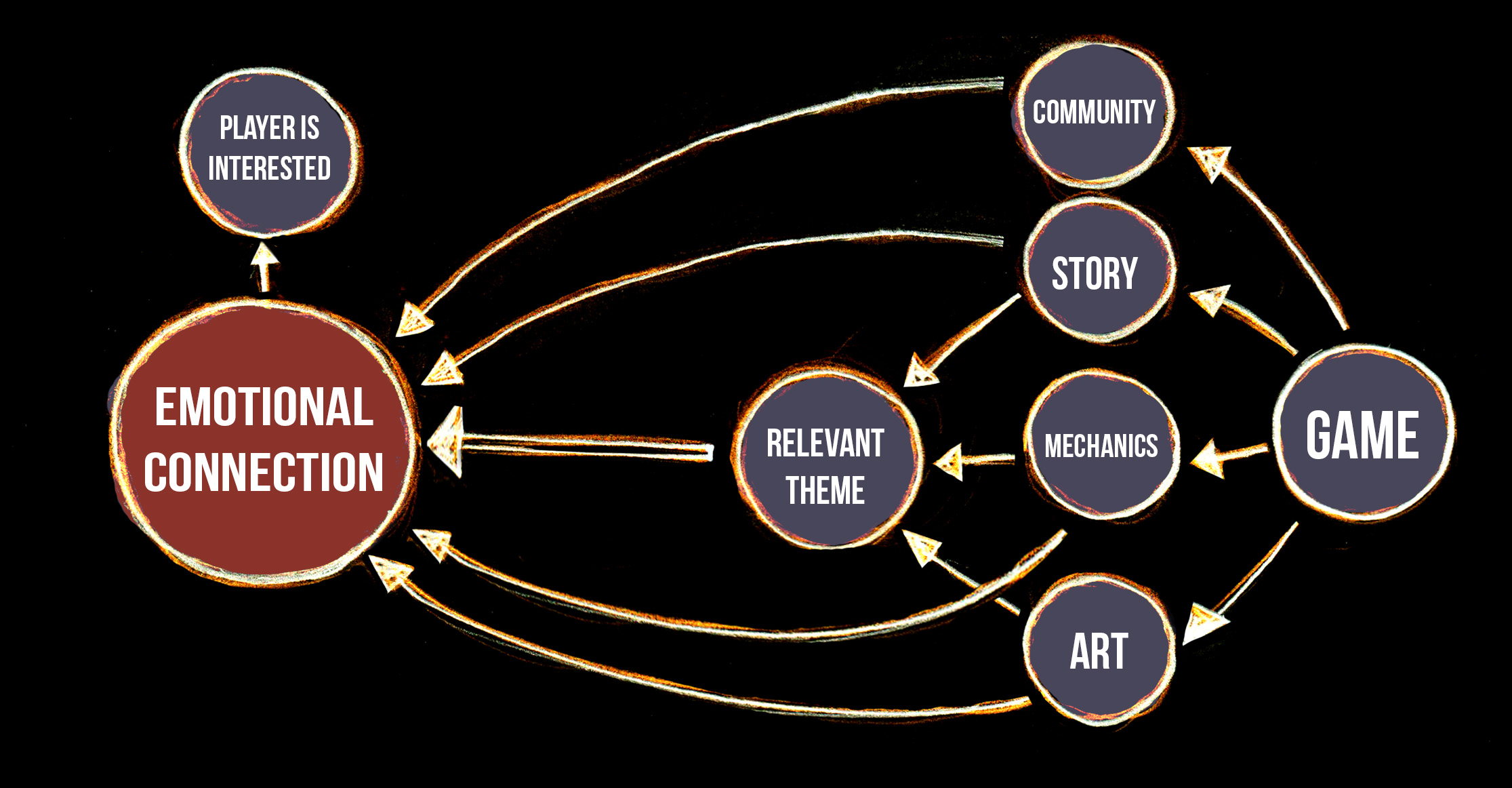Connect
Added on 13 June 2014
By admin
Don’t be afraid of having a point of view! People connect much more strongly to a point of view that they resonate with.
Connection is only one part of the puzzle. To be successful, games need first to stand out and be noticed, then connect with players and engage them, and finally find a way to continue growing their player base. Assuming of course that there is a sustainable business model behind.
Once your game stands out and your players are aware of your game, you need to connect with them and get them interested in it.
The most effective way to connect is setting an emotional link between your game and them. Emotional links trigger emotions. Bland things don’t trigger emotions. Your game could connect through cool characters and environments, a fun mechanic, a compelling story, or by compelling social interaction. Even The more things you can connect with, the better. The important part is that these things need to have a personality and a point of view, even if that point of view turns some people off it will create stronger connections with those that resonate with it.
Ideally it works something like this:
- You connect to your player through at least one of the main elements in your game.
- Having a theme with a point of view that ties together all the elements of your game and resonates with your player is an effective power up to create that emotional connection.
Connecting is an essential part of the process, but first you need to stand out and get noticed, and then you need to engage your players and grow your game.
The most effective way of developing a game that does these things is by following a player-centric development grouped in three steps:
- Your Fortified Vision which will help you sell your idea, confirm that your core assumptions work with your target players, and serve you as your northern star that guides you through the hectic development process.
- A Prototype of Your Core Engagement Loop where you will figure out the cycle of events that will both keep your players engaged and let you achieve your goals.
- Your Minimum Viable Product focused only on your main loop, and leading players in and out of this loop to allow your game to stand out, connect with players, and grow.
For more information on how can I help you develop a successful game, take a look at my services



